Pieria - Olympus Tour
Estimated Duration
10 Hours
Estimated Distance
460 Km
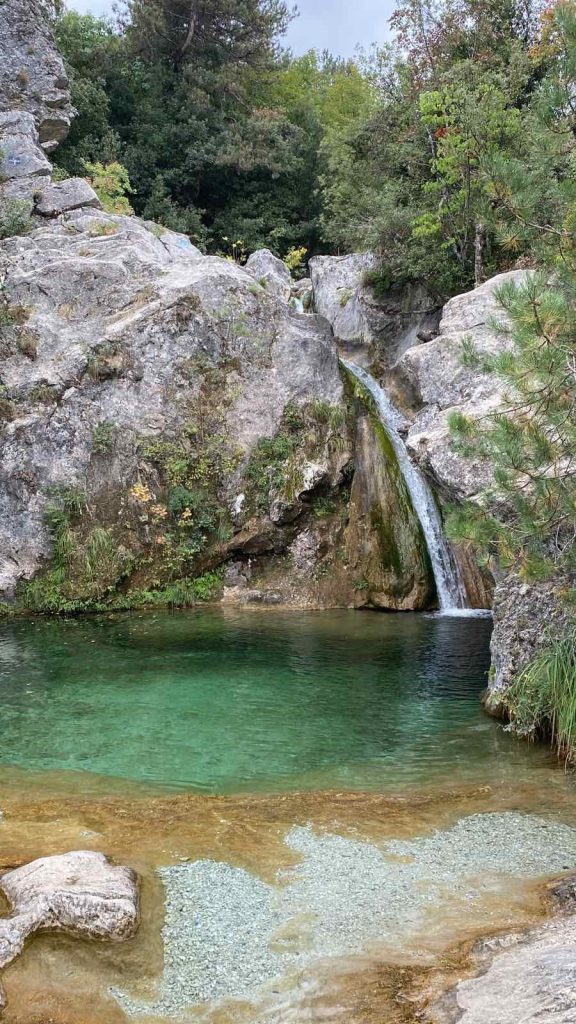
Agia Kori Waterfalls
Agia Kori is one of the beautiful gorges of Olympus, above the village of Vrontou, on the north side of the mythical mountain. “Drowned” in the vegetation, full of natural lakes, slides, and crystal clear, green waters, it is an ideal place for hiking and canyoning.
A special feature of the gorge is the imposing waterfalls that it creates, a place with a lot of traffic as the spectacle is impressive.
A small and beautiful route for the whole family.From Vrontou, following the signs, we will reach the entrance of Ekklesaki, where there is a parking lot.
We go down the steps and in a very short time we reach the Church of Agia Koris, where there is also a Holy Chapel. After worshipping, we continue left from the Chapel and at the junction we meet we continue straight on for a while to see the small cave of Agia Koris.
For the rest we follow the nice path, a little uphill at the beginning, which after about 500 meters will lead us to the waterfall.
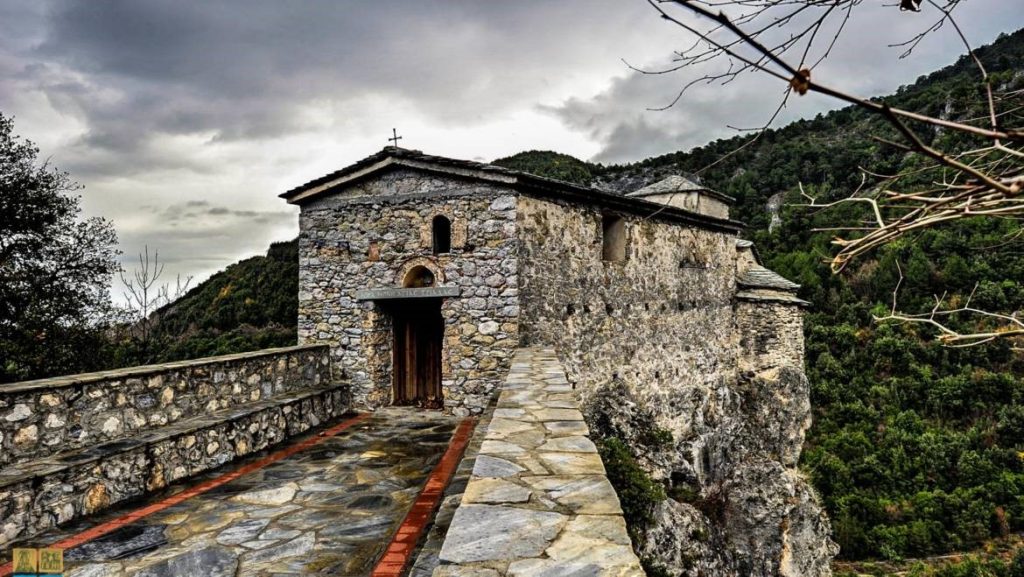
Church of Holy Trinity
Agia Triada is located on the road to Agia Koris, at a distance of about 4 km from Vrontou and at an altitude of 500m, built on the rock, on a steep slope. It is located at the exit of a large ravine (Papa stream) of Olympus. From here, two important hiking trails to Mount Olympus start. The church is built at such a point that it has visibility to Panagia Kontariotissa and she in turn to the Monastery of Agios Dionysius of Olympus and to the bishopric of Petra. According to oral testimonies, there was a kind of communication with fires, in order to inform the inhabitants of these areas about the movements of the Turks. It is a Byzantine building of the 14th century. Two layers of hagiographies are still preserved inside. The first was made in 1350 and the second in 1650. It was accidentally burnt down in the 60s by lit candles. The church used to be a monastery .The first part of the church was divided into two floors . A staircase , which was burnt and does not exist today, led to the upper floor where the cells where the monks lived were.

Enipeas (river of Pieria)
Enipeas is a river of Pieria, which flows through Litochoro. Its gorge has been developed and exploited to such an extent that it attracts many tourists every year.
The name of the river comes from a sea deity, father of Pelias and Nileas and husband of Tyros. It is a personification of Poseidon. The same deity is found in Thessaly and Elis. According to mythology, the musician Orpheus was devoured by the Maenads in the gorge of Enipeas, while the beautiful Leto bathed in the waters of the river.The waterfall of Enipeas at Vythos
The Enipeas has its source in the place Prionia, at an altitude of 1000 meters. The swimming pools (pedestals) along the river are natural pools. The water temperature is just above zero degrees Celsius and swimming should be done with caution and never by hearty swimmers. Surprisingly, the route along the river (either on the ascent or descent) is not one of the most popular on Mount Olympus.
Most climbers prefer to bypass it and climb up to Prionia by car and from there continue climbing up to the high peaks. This route, however, is one of the most beautiful, shadiest and definitely the wettest of all! It is suitable for all ages and is ideal for family outings and overnight stays in relative safety. The trail starts from Litochoro (position “Mili”) at an altitude of 300 meters.
At Vythos, the Enipeas Gorge creates a large opening with a waterfall and there are views of the high peaks of Mount Olympus, Mytikas and Stefanis.[1] It is 9 km long and a moderate hiker will reach Prionia in 5-6 hours. The water of the river is drinkable in almost all parts and it waters Litochoro.
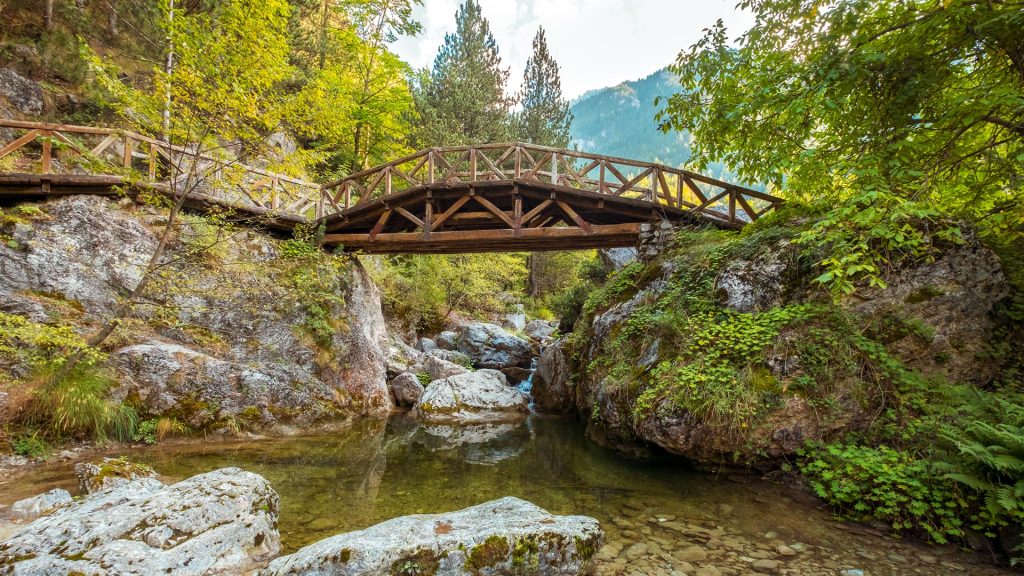
Litochoro - Prionia - Spilios Agapitos Shelter
Mountain Olympus is a hiking heaven with an extensive network of trails (more than 257 km) of different levels of difficulty. Olympus is the highest mountain in Greece and the palace of Zeus and all the other Olympian Gods, according to the ancient Greeks.
A fascinating mountain to explore with amazing views and home to diverse flora and fauna. Most of the trails begin from Litochoro, a small town approximately 100 km outside of Thessaloniki. The most popular path is the international E4 which starts from Litochoro through the stunning Enipeas Canyon and Prionia and ends at the Refuge Spilios Agapitos, at a height of 2.100 meters (6.890ft).
Because all refuges have difficult Greek names, they also referred by letters of the alphabet. The refuge on this route, Spilios Agapitos, is referred to as Refuge A. The distance is approximately 16 km and the advertised time to complete the trail is 9 hours but it usually takes longer including photos and food stops.
The path itself is excellently maintained and well-marked. On the way up, you will come across seven beautiful wooden bridges and the Holy Cave with the Holy Spring of Agios Dionysios. About half an hour further up the trail you will find signs to the old Monastery of Agios Dionysios which was built in 1542 by the monk, but destroyed by the Germans in 1943. The monastery is open from April to October and is well worth a visit. Around 10 minutes after the monastery, the path starts to descend and shortly after you will come across the spectacular waterfalls of Enipeas. The route is quite tiring due to many ascends and descends but the beauty of the nature will surely reward you. However, it is not a pram friendly trail and we wouldn’t suggest it to anyone on the waiting list for a knee replacement.
Prionia is the highest spot accessible by car with a parking space and a café-restaurant that is open all year round. Located at an altitude of 1.100 meters is a perfect place for a stop to rest. The trail from Prionia to Refuge A, starts after the cabin and passes through dense forest. At 1390m, there are a couple of benches with great view and a spring, which usually dries out in the summer. The last section is a bit steeper and takes you to the refuge, built on a location called “Balkoni” (meaning balcony in Greek), due to the amazing view of the ocean and the mountain peaks above.
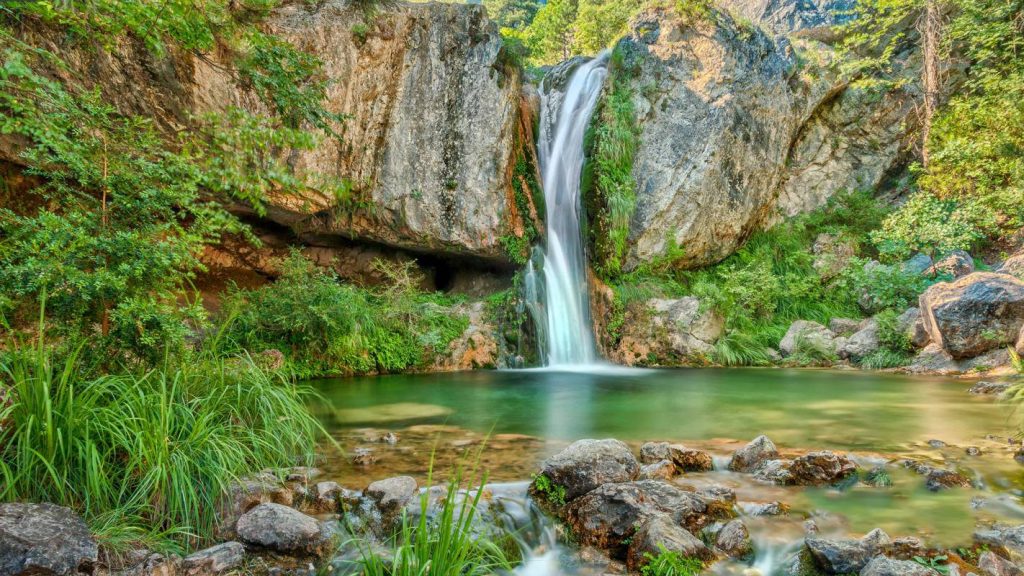
The Stream of Orlia
A particularly popular destination among locals for day trips, the Orlias Stream remains terra incognita for many of us. Located on the eastern slopes of the Mountain of the Gods, very close to Dion, its flow forms a fairytale landscape with impressive waterfalls and pedestals of crystal clear water. And the best part?
Getting to this little paradise is effortless.One of the oldest streams in Pieria and of particular importance for Mount Olympus, Orlias was a river in antiquity and was originally called Elikonas before being associated with the main representative of the art of singing and the lyre, Orpheus.
According to the legend, the Pierian Muses lived in Helicon, singing and dancing close to their father, Zeus. Orpheus, remembered in history for his great love affair with Eurydice, met a horrible death at the hands of the Pyrrhic Muses in the river Helicon at the point where it disappears into the depths of the earth.
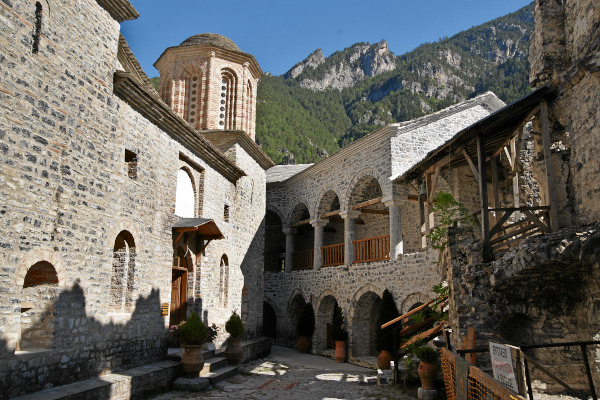
St. Dionysios Monastery
The monastery dates back to the year 1542 where it was founded and dedicated to the Holy Trinity by a single monk, Saint Dionysios, who was residing in a nearby cave. In due course, the name of its founder replaced the original. Throughout various wars and conflicts, St. Dionysios Monastery acted as a shelter for locals and soldiers.
Over the years, the monastery was wrecked and built several times. Under Turkish rule, the monastery functioned as a spiritual refuge, with its abundant supply of books and its manuscript-copying workshop. In 1821 the monastery was set afire by Veli Pasha, son of Ali Pasha. The monastery played an active role again during the Olympus Revolution of 1878 by providing shelter to women and children of Litochoro, halting for the first time the prohibition of women in the monastery.
During the Macedonian Struggle, the monastery once again served as a shelter and replenishment station for citizens and fighters. The final blast towards the monastery occurred during WWII, where the German military first bombed the site in 1941 and later almost destroyed it by bombarding it again in 1943, to prevent Greek resistance fighters from taking shelter there. In spite of all the attacks the monastery endured over the years, the monastery never ceased to protect the residents of Olympus.
Many of its buildings have been restored since then, preserving the original stone and wood structure of the monastery.
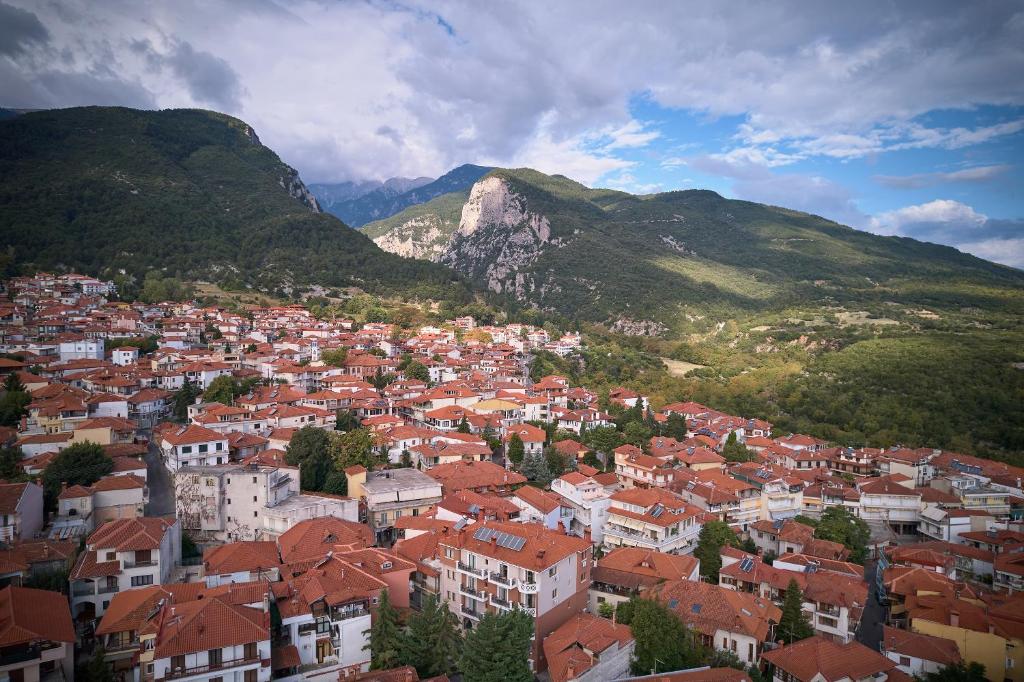
Litochoro
It stretches up the mountainside of Olympus’ highest peak (Mytikas, 2,918 m.), yet Litochoro is only a few kilometres away from the sea and that makes it the perfect tourist destination any time of the year! This picturesque town was built following the traditional architecture of Macedonia and the variations of lush vegetation surrounding it enhance the area’s aesthetic harmony. It is a well-structured tourist resort with quality hotel facilities and services and the favourite point of departure for mountaineering trips up the abode of the Olympian gods. The settlement dates back to the 14th century. Following descriptions by foreign and Greek travellers at that time, the majority of residents were mariners and there were also a good many textile workshops in town.

